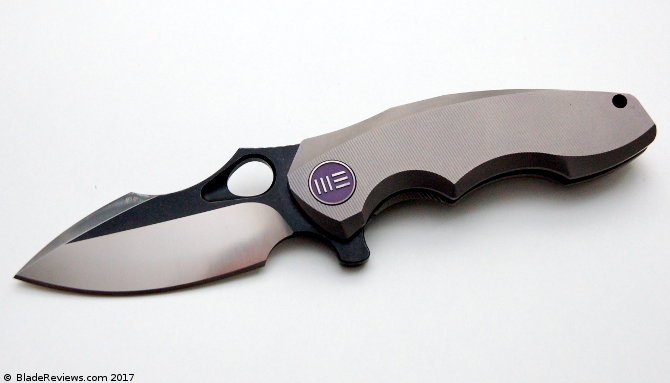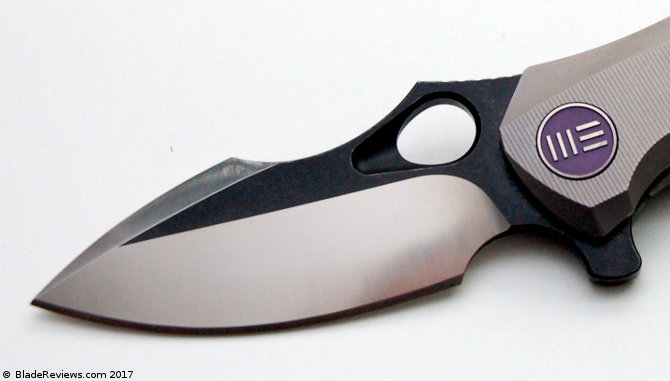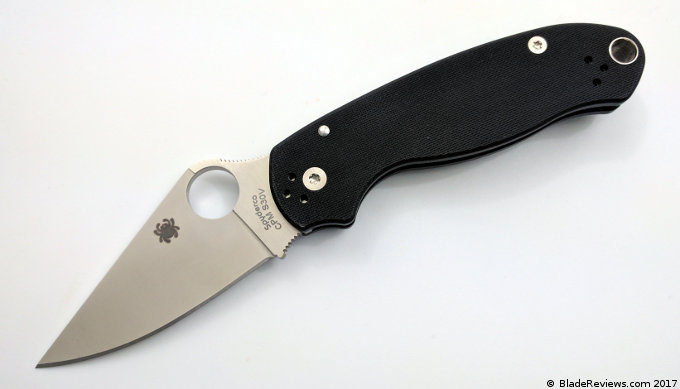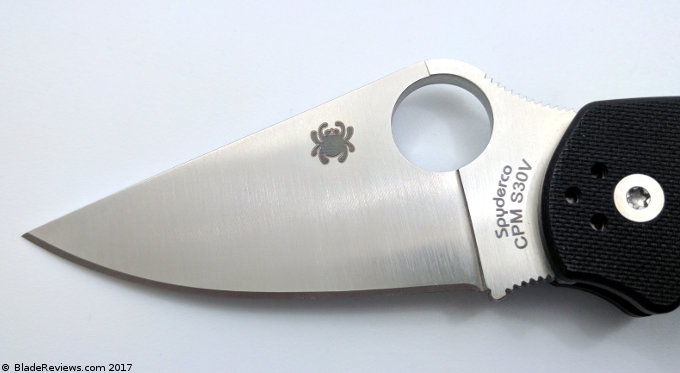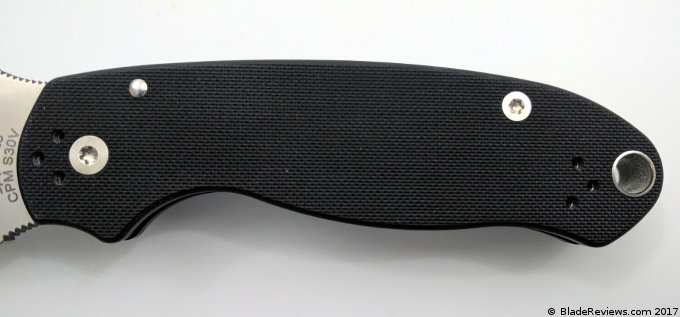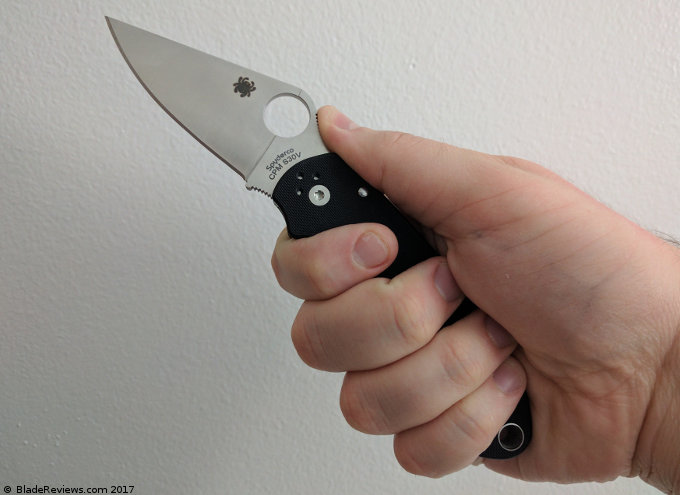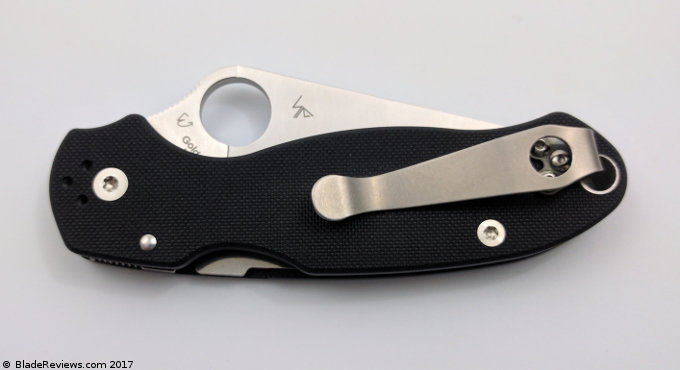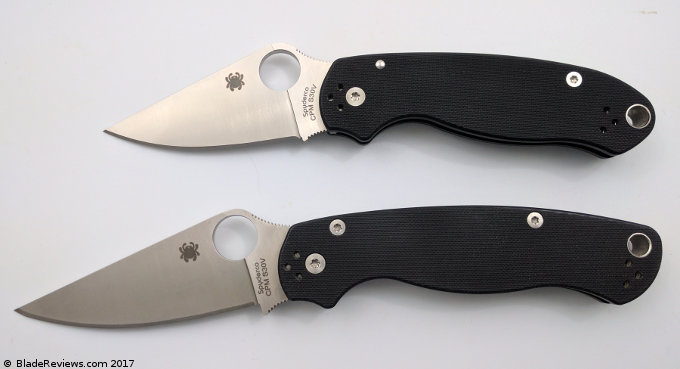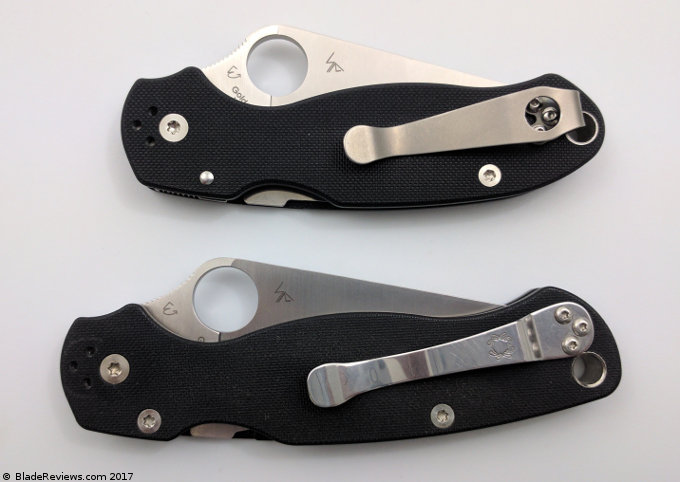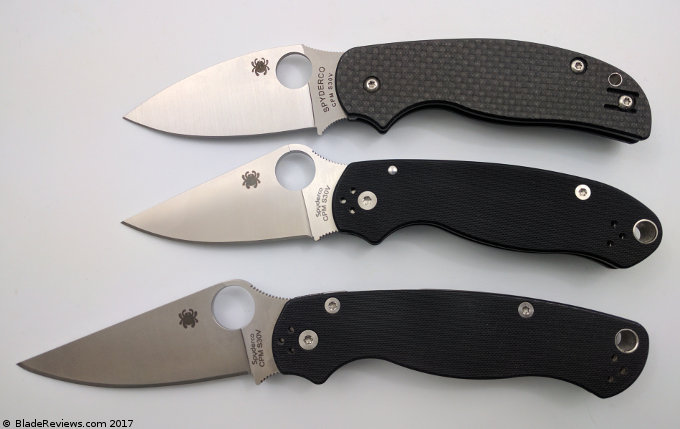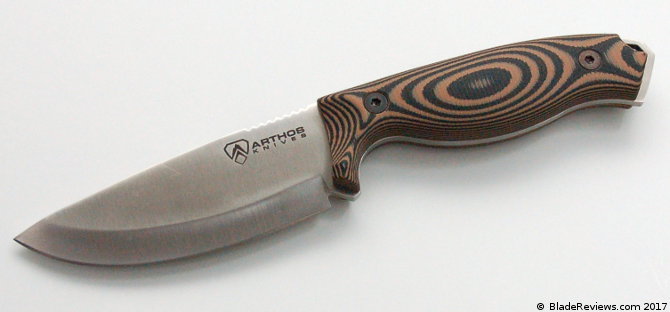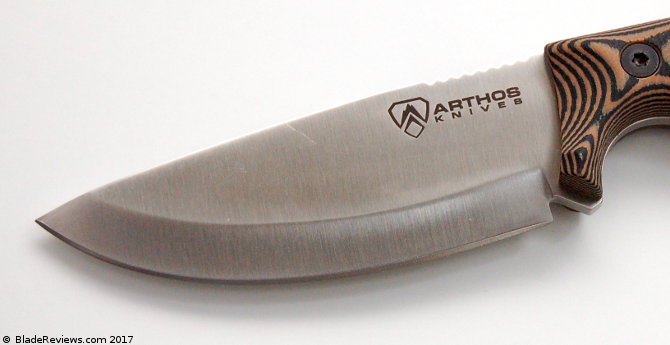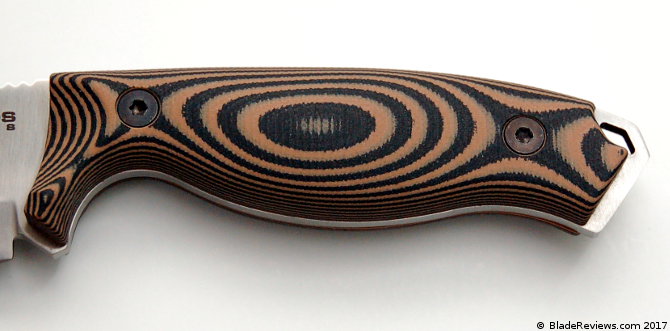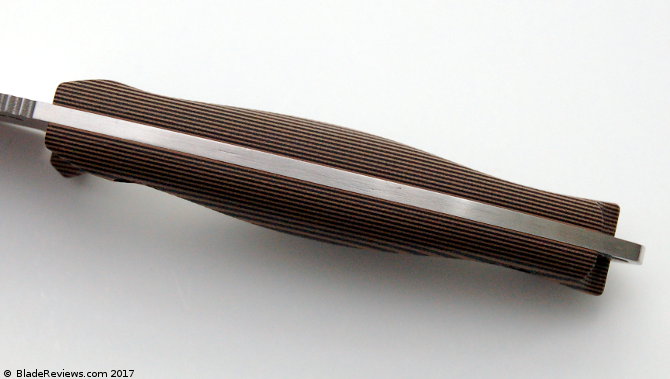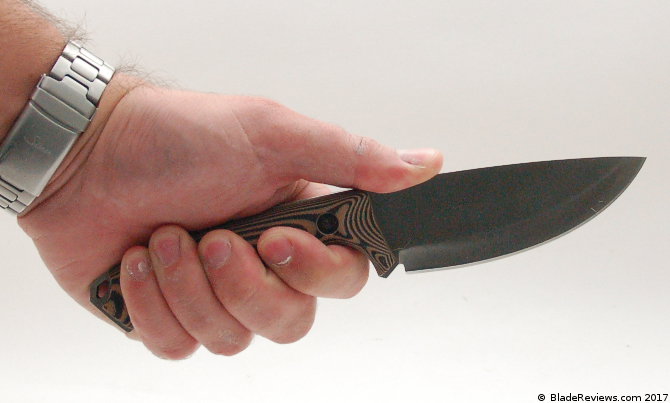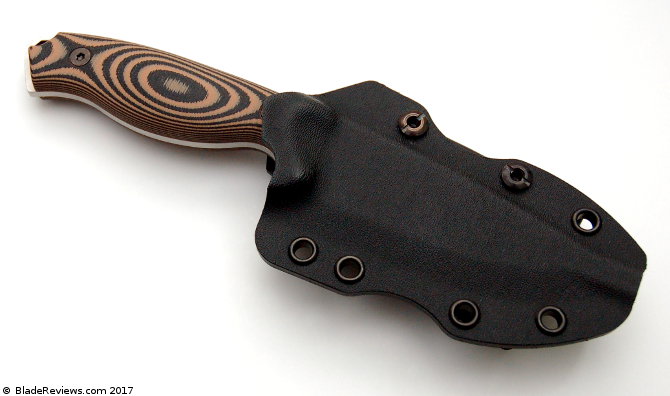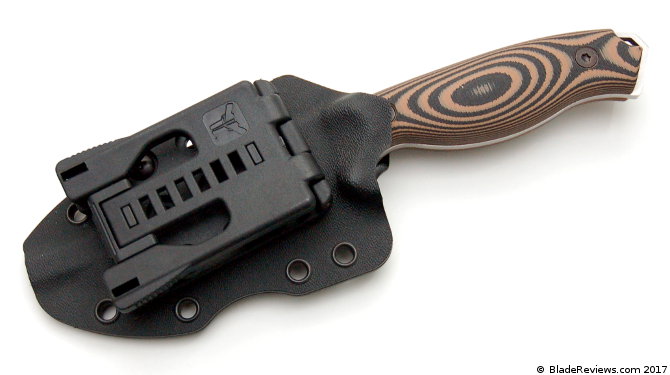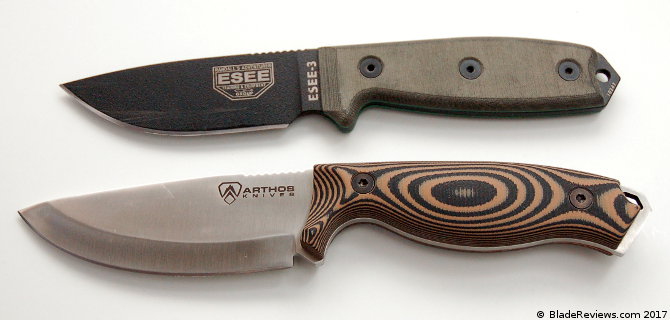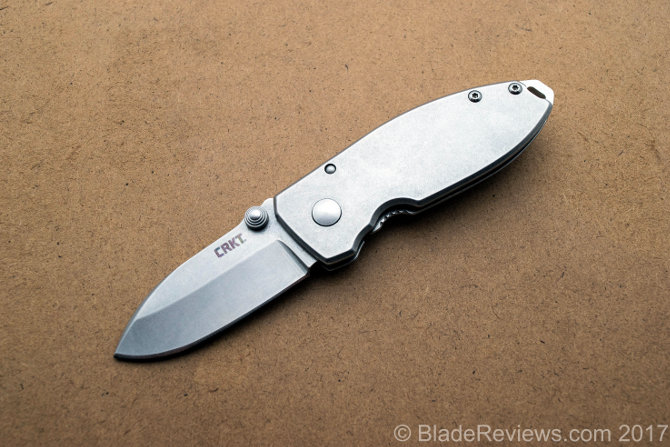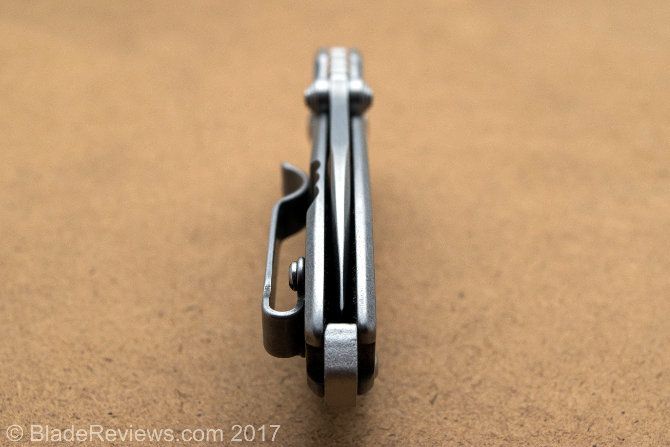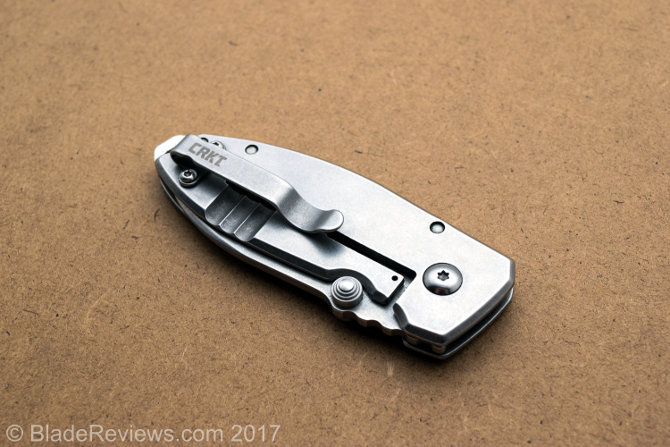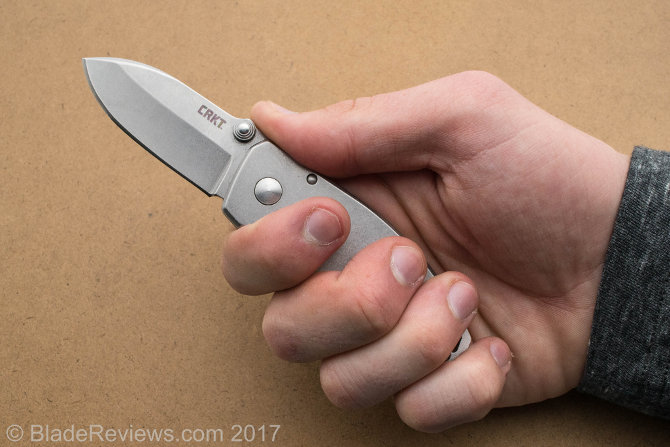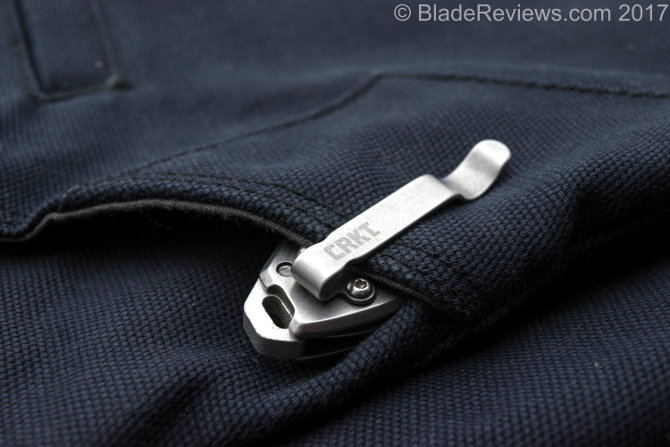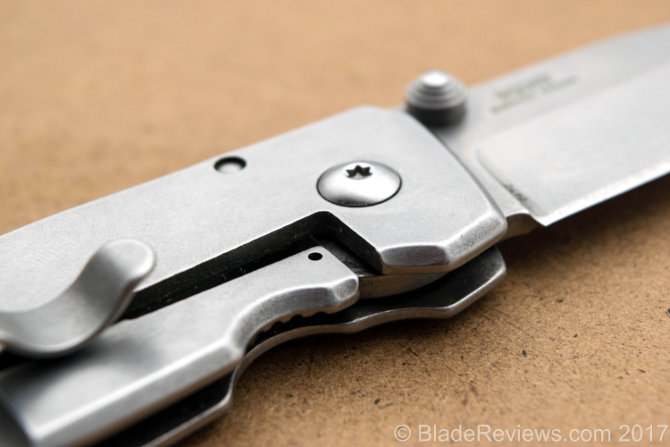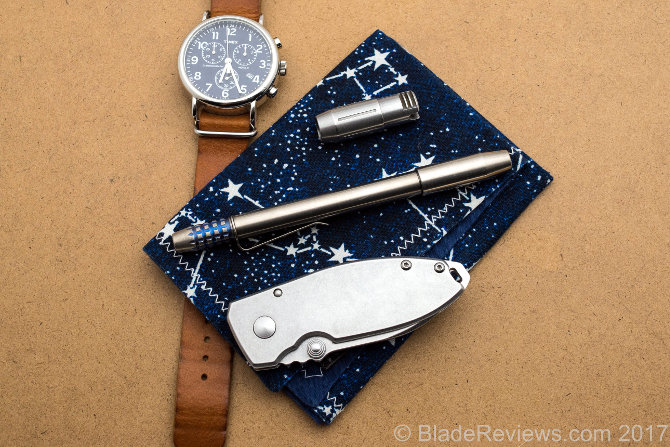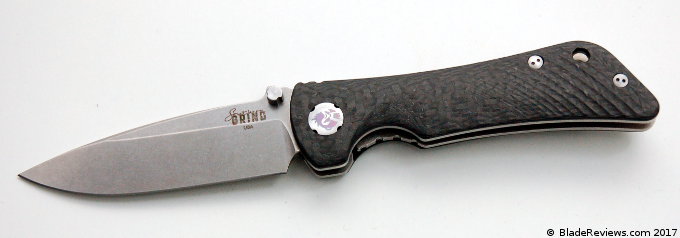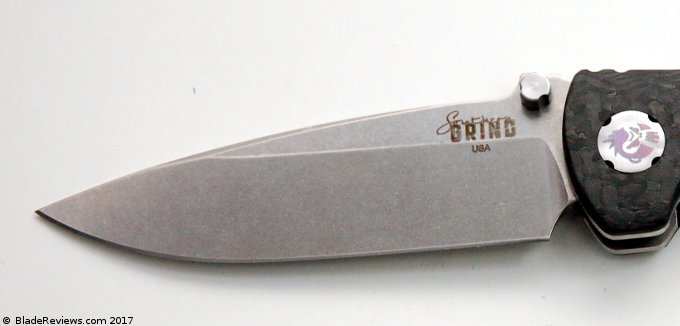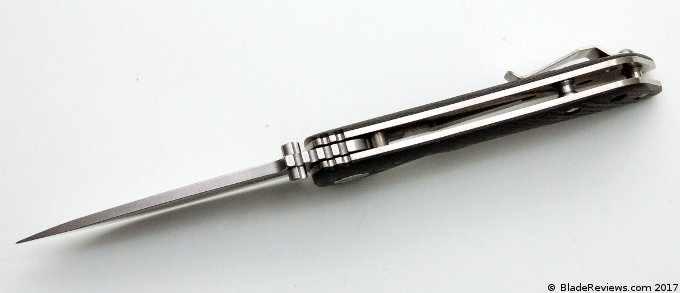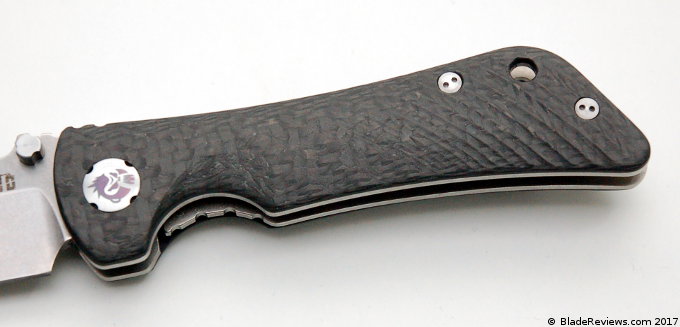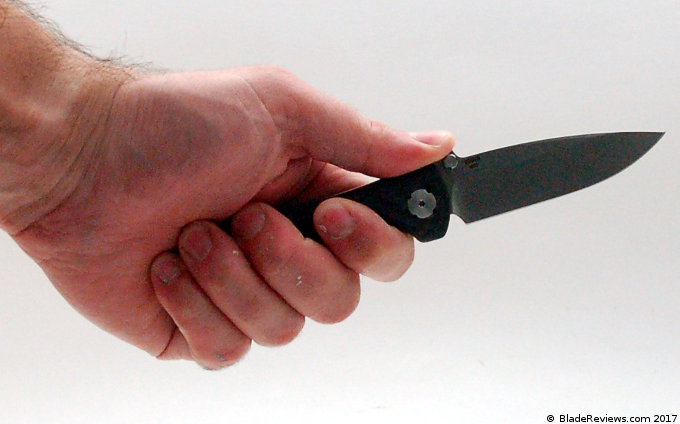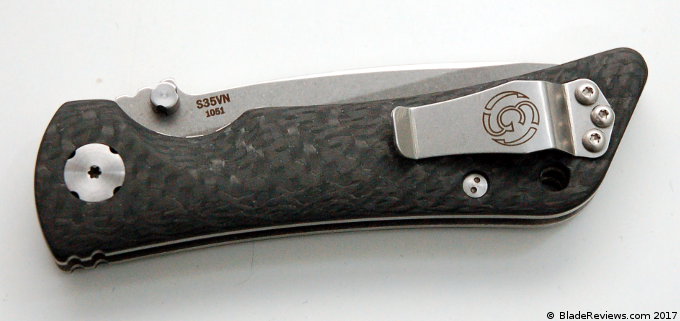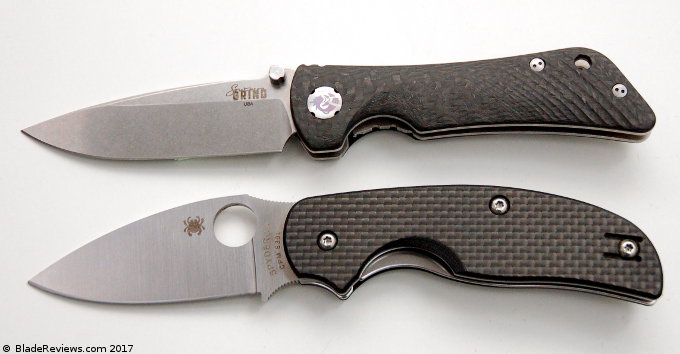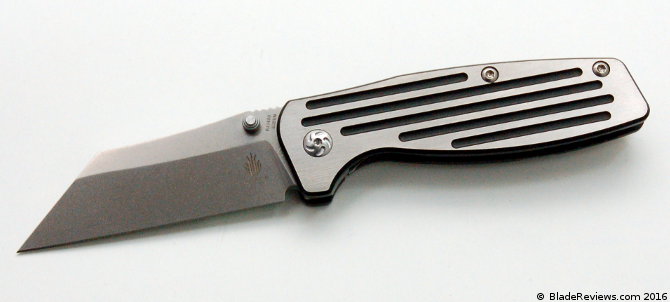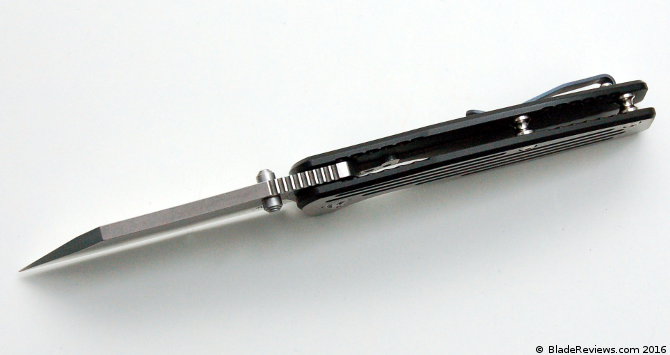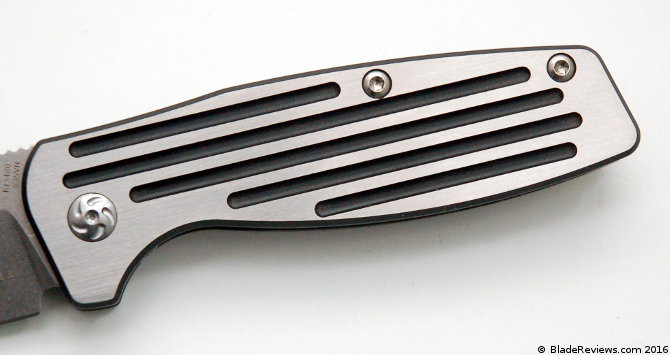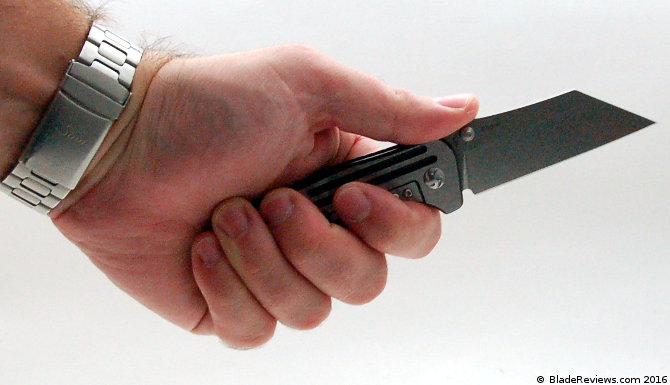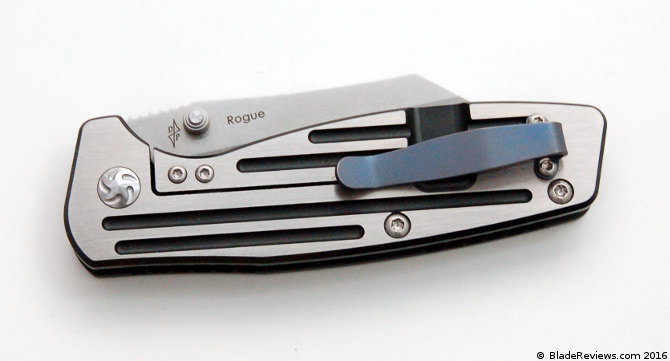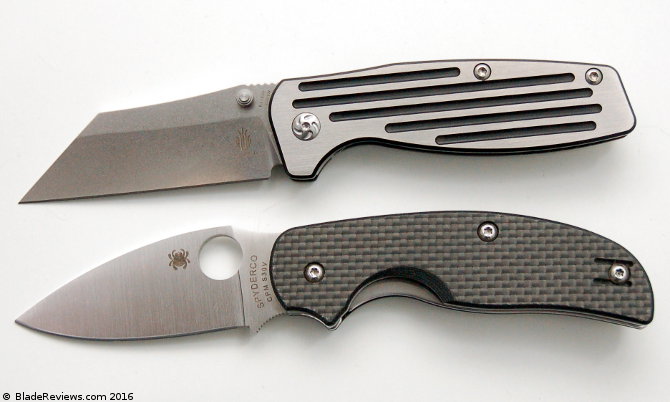WE Knife Co. (or “WE Knives”) is a relatively new manufacturer from China. Technically that isn’t true as, they produced OEM knives for other brands for years, but WE Knives has recently garnered attention from knife collectors under their own brand. This is thanks to a combination of precision machining, high end materials, and a unique aesthetic.
Buy the WE Knives 605 at BladeHQ
I thought WE Knives were interesting, but largely dismissed them as most of their models feature 3.75″+ blades. I don’t mind a bigger knife, but for a true daily carry piece I gravitate towards knives with a 3.5″ blade or under.
The WE Knives Model 605 is a strong departure from their typical 4″ bladed behemoths. Here we have a compact and curvaceous design. Offered in a variety of colors and finishes, the 605 is anything but boring. And when I got a chance to check one out in person at Smoky Mountain Knife Works, I knew I had to pick one up for review.
General Dimensions and Blade Details
The Model 605 has an overall length of 7″, a 3″ blade, and weighs 4 ounces. My particular model is the 605J, with grey titanium handles, a two-tone blade, and purple anodized accents. This is a nice size for daily carry, but the knife itself is almost too nice to really beat on. It certainly could be considered a collectible, and it comes in a zippered nylon pouch with microfiber cleaning cloth.
The blade is a modified drop point. It has a satin finished high hollow grind and swedge, and black oxidized flats. The blade is beautiful featuring immaculate grinds, a perfectly even edge, a rounded thumb ramp, and interesting details around the thumb hole.
WE Knives went with S35VN blade steel for the model 605. Knife enthusiasts will know that this is an American steel made by Crucible. Much like Kizer, WE Knives appears to import raw material from the United States to manufacture their knives. That level of attention is uncommon, and helps shuck off the stigma that Chinese knives are cheap and undesirable.
S35VN is an excellent choice for blade steel and is cropping up in a lot of the high end knives I review. Much like CTS-XHP and CPM-154, S35VN gives you a good balance of edge retention and ease of sharpening. It’s a practical steel for a user knife. It’s high end, but not high maintenance. It also takes a beautiful polish as this 605 clearly demonstrate. I had a tough time getting a photograph of the blade without getting reflections in the shot.
Handle, Ergonomics, and Pocket Clip
The handle of the 605 is another thing of beauty. The crisp lines, the use of texture, and faceted handle all serve to catch the light and draw in the eye. The bookmatched titanium handles provide the illusion that the handle is made from a single piece of material. And of course we can’t ignore the purple hardware. Usually purple isn’t my first choice for a knife, but it’s a nice change of pace from the typical blue. WE Knife Co. has a muted color palate that they like to feature on all their knives. It’s unique and I like it. Another surprise is the fact that the inside of the handle has been milled out. This lightens the knife and shows even more care and attention.
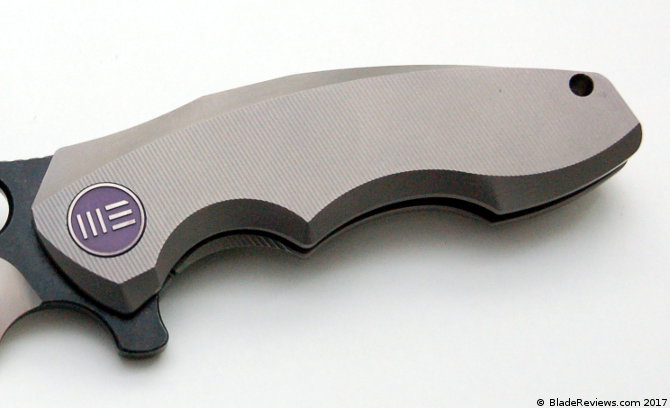
While the handle itself is immaculate, I care less for the choice of proprietary star head hardware. Much like on the Southern Grind Spider Monkey, hardware like this makes the knife impossible to take apart without a special tool. That said, at least WE Knife Co. has the decency to include a take down tool with every knife. That is much more forgivable to me, but it still requires the use of a specialized tool.
The 605 ergonomically dialed in. This is a small knife with several finger grooves. Oftentimes that spells disaster, but here WE Knives managed to get this spaced right, at least for my larger hand. There is just enough room on the handle for a full 4 finger grip. However, if you use the forward finger choil on the blade there is plenty of room the spread out. I’m generally a fan of forward finger choils, and the one on the 605 is no exception. For traction you have light texturing on the handle and a short run of jimping on the spine of the blade. This jimping is good: it offers some traction without being too aggressive.
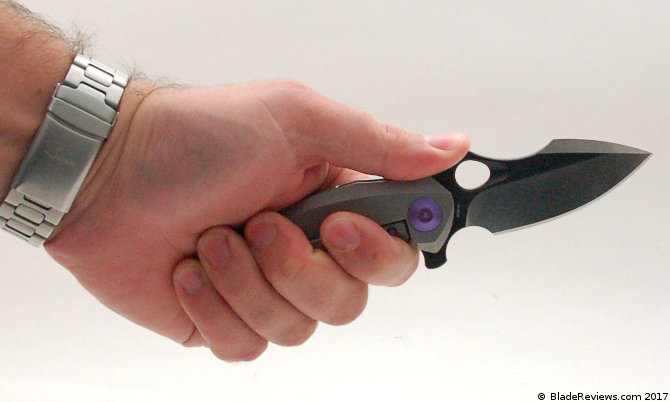
The 605 comes with a milled titanium pocket clip. Milled clips seem to fall in and out of favor. At first they were a desirable high end feature appearing only on expensive custom knives. As they became more accessible some people came to the conclusion that they were ineffective pocket clips, bulky and with poor spring retention. I haven’t had a ton of experience with milled clips, but I can say the one on this 605 is excellent. Retention is about perfect. The knife slips in and out of the pocket easily, but isn’t loose. Aesthetically, I think it’s a big improvement over a stamped clip.
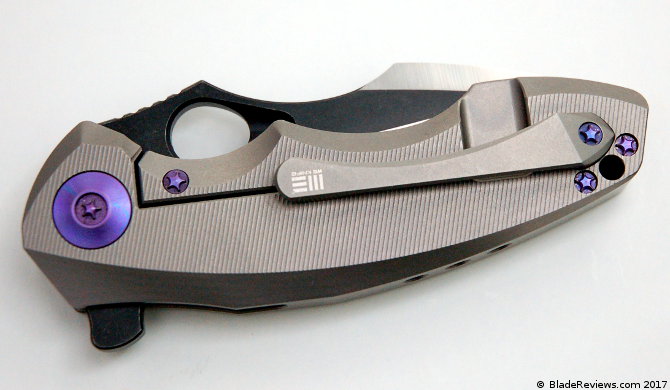
This knife carries well, which shouldn’t come as a surprise. It has a small blade, but at 4 ounces and .54″ thick it’s pretty chunky. The pocket clip does a good job keeping the knife in place, and I largely forgot about the 605 as it rode in my pocket.
Deployment and Lockup
This knife comes with both a thumb hole and a flipper. Of course most people will be drawn to the flipper, myself included. I found it flips nicely. It’s on par with my Zero Tolerance flippers and my Kizer Intrepid. Much like some Zero Tolerance folders, you do need to take care when opening up the knife with your right hand. If you put pressure on the lock bar, it will make it tough to deploy the blade. That is one of the few perks of being a lefty.
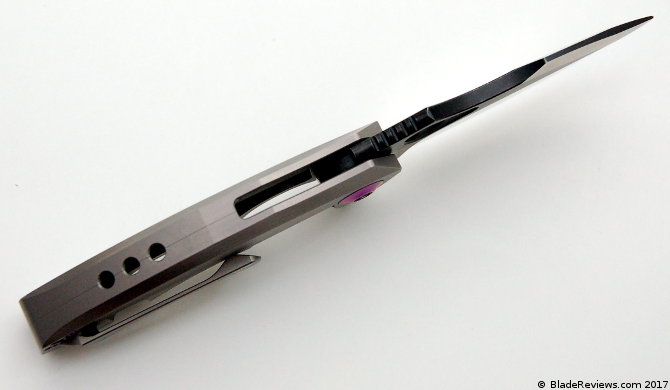
Of course if you get tired of the flipper you can also open the knife with the thumb hole. The detent on the 605 is substantial so it will take some dedication to use the thumb hole, but it’s entirely possible to open the knife this way. Action is smooth thanks to a ceramic ball bearing system. It is not the absolute smoothest knife I have operated (that is probably reserved for the ZT 0454 or the Shirogorov 95t), but it’s pretty damn smooth. You can shake the knife closed after disengaging the lock.
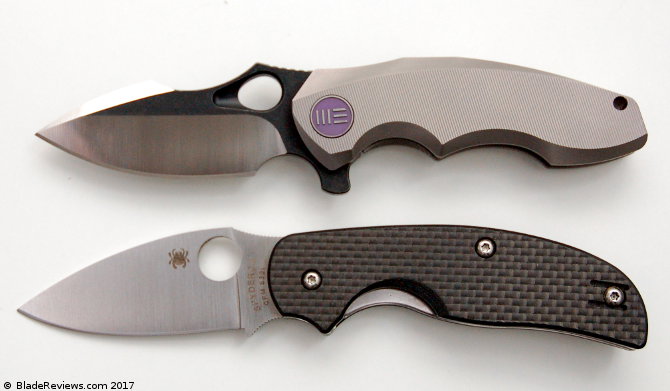
Speaking of locks, the 605 comes equipped with a titanium frame lock with stainless steel lock bar insert. The lock has been executed perfectly. There is no lock rock, lock stick, or blade play of any type. I would again put this on par with my ZTs, which I consider to be a gold standard for titanium framelock flippers.
Blade centering is dead perfect.
WE Knife Co. 605J Review – Final Thoughts
We are only 3 months in to 2017, and I am already thinking that this could be the nicest knife I review all year. I enjoy it because it is unique, meticulously machined, and above all, thoughtful. There are so many details to consider that I can’t help but compare this to a Shirogorov. It’s not quite on that level. It is pretty close, but it’s not a $700 knife. Everything from the superbly finished blade to the pocketed titanium handle has been a fanatical level of consideration. I also enjoy the design. It won’t be to everyone’s taste but I think the 605 is unique and compelling. This is something I can’t say about every one of their models.
I am glad I took a chance on the WE Knife 605. I’d recommend it without reservation if you are interested in the design. It isn’t cheap, but I see a lot of value for money here. I think you will be impressed.
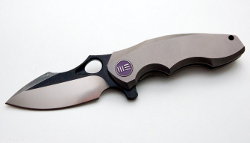
We Knives 605J – $242.25
From: BladeHQ
I recommend purchasing the We Knives 605J at BladeHQ. Purchasing anything through any of the links on this site helps support BladeReviews, and keep this review train running. As always, any and all support is greatly appreciated.
